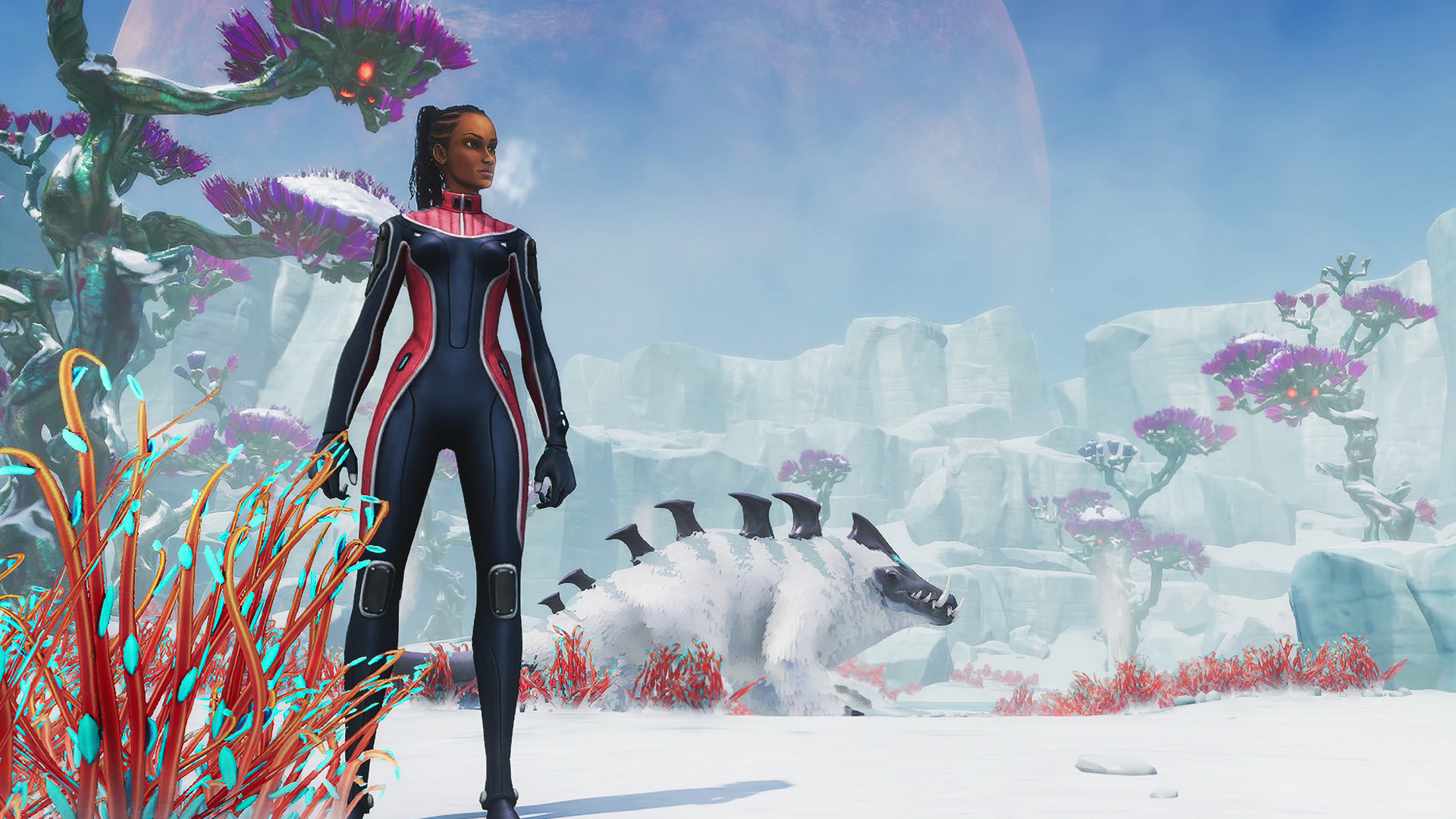Our Verdict
Below Zero is a mostly brilliant sequel to the best survival game of all time.
PC Gamer's got your back
What is it: Underwater survival sequel with a new arctic theme
Developer: Unknown Worlds Entertainment
Publisher: Unknown Worlds Entertainment
Reviewed On: AMD Ryzen 5 3600, Nvidia GeForce 2080 Super, 32 GB RAM
Multiplayer: None
Link: Official site
2018's Subnautica is not only the best survival game in existence, but one of the best games ever made regardless of genre. Its wondrous mix of exploration, storytelling, crafting, base building, and occasional trouser-shredding terror, all taking place in one of the most imaginative virtual worlds ever conceived, is up there with games like the Witcher 3 and Dishonored in terms of mastery of the craft.
Subnautica: Below Zero is almost as good. I say that rather than "not as good", as I don't want to sound like I'm writing from a position of disappointment. In almost every way, Below Zero shares the wild imagination, adventurous spirit, and richly tactile systems of Subnautica, while there are several areas where it undoubtedly improves upon that first game. Nonetheless, Below Zero is a less consistently brilliant adventure. There are some areas where the game frustrates, and others where Unknown World's admirable efforts are less effective than they were three years ago.
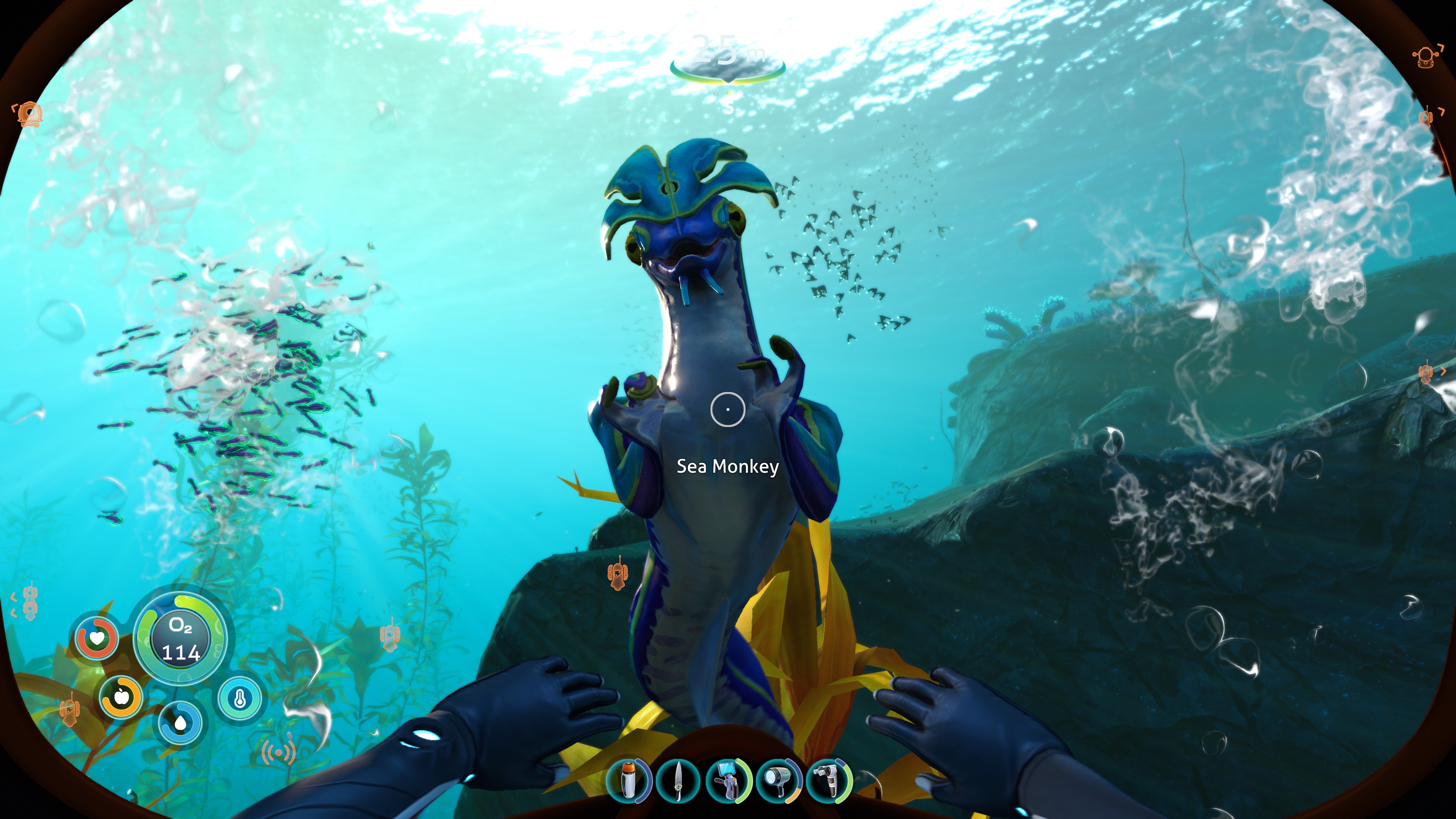
Below Zero returns players to the marine planet 4546B, this time donning the flippers of a new protagonist named Robin Ayou. Whereas Riley Robinson's visit to 4546B was accidental, Robin is deliberately searching for her sister Sam. According to Sam's employer, the trans-government Alterra, she was killed through her own negligence while on a research expedition to the planet's arctic region. But Sam's previously recorded messages to Robin tell a different story. Arriving alone with minimal supplies on an unsanctioned search and recovery mission, Robin must follow her sister's trail while surviving the harsh climate of 4546B's arctic.
This environment is Below Zero's biggest new feature, and the main area where the sequel improves over Subnautica. 4546B's icecap introduces a number of new biomes for players to explore, both above and below the water. Beyond a familiar introductory area of shallow coral and fluttering kelp, Below Zero's aquatic topography includes giant lilypad forests, shimmering crystal caves, and bubbling purple vents that explode if you approach too closely. My favourite area is the enjoyably named Twisty Bridges, a meandering underwater trench spanned at random intervals by tangled strands of coral. It's a prime example of Unknown's Worlds' knack for designing truly alien environments, a major factor in what makes Subnautica a cut above other survival games.
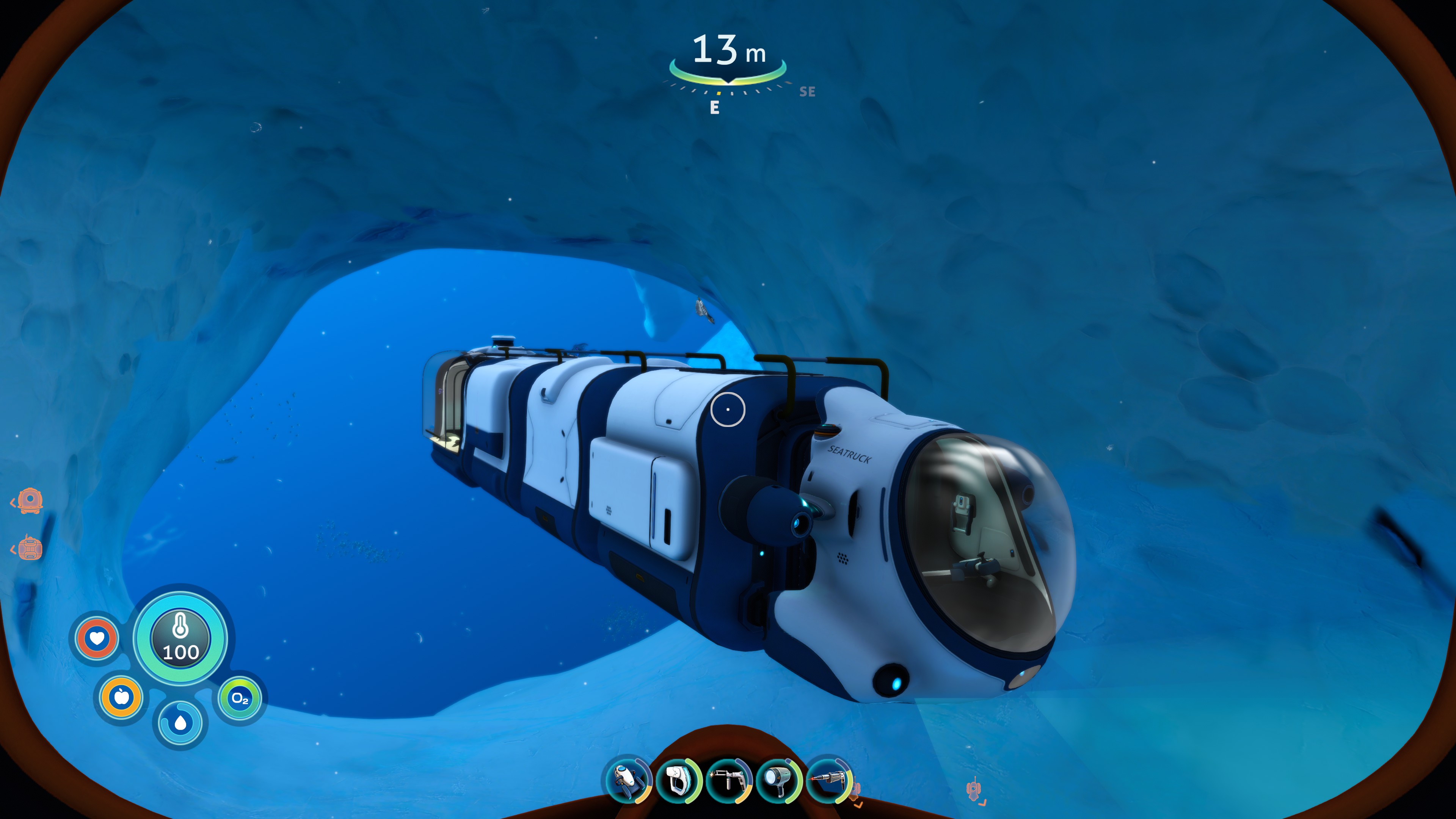
Although Below Zero still mainly focuses on life beneath the waves, there's a greater emphasis on terrestrial exploration. Below Zero introduces several new land biomes, all of which carry the game's arctic theme. From glacial bays through towering icebergs to artic tundra dominated by vast spikes of rock, these freezing landscapes are every bit as strangely beautiful as Below Zero's aquatic scenery.
Also, dangerous. Below Zero's polar terrain enables Unknown Worlds to bring Subnautica's survival play onto land. When you breach the surface of Below Zero's ocean, your O2 metre swaps out for a temperature gauge that slowly depletes. Spend too long exposed to the elements and you'll succumb to hypothermia, so you must regularly find shelter in caves or literal hotspots such as geothermal springs or the ring-hob glow of Thermal Lilies. Below Zero brings other Subnautica systems onto terra-firma too. There are several new land-based fauna, some of which are large and aggressive, and even a land-specific vehicle that'll help you navigate the more expansive terrestrial biomes.
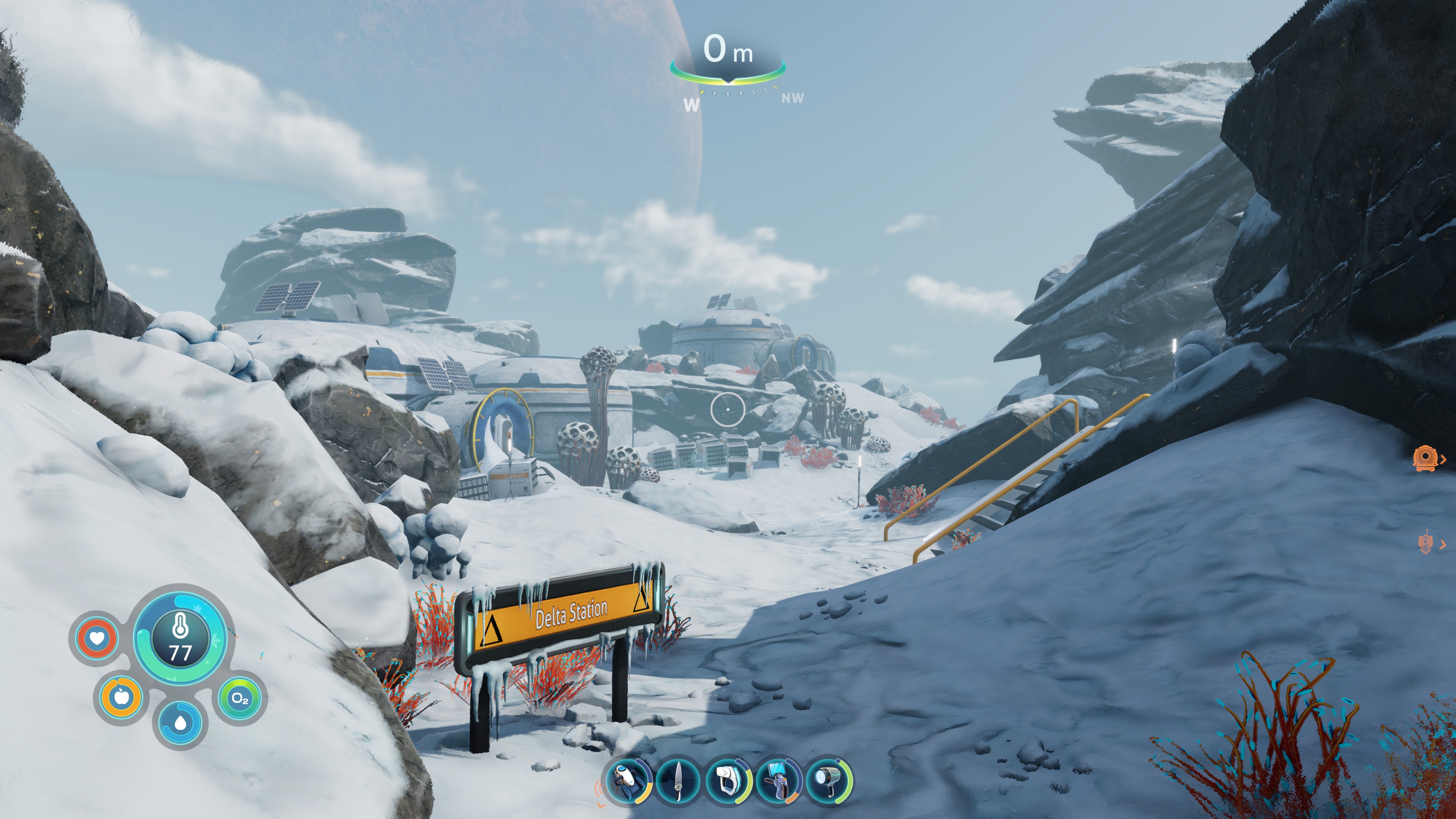
It's a big improvement over Subnautica's limited land exploration. That said, Below Zero remains better where it's wetter. As with its biomes, Below Zero's plant and animal life is almost entirely new, but it's also more nuanced in terms of how you can interact with them. Between the edible small-fry and the terrifying Leviathan-class beasts are more eclectic creatures like the Titan Hole-fish, which traps potentially life-saving air-bubbles in its doughnut-shaped body. These can be inhaled provided you avoid the wrasse-like brinefish, who follow Hole-fish around and can freeze you with a blast of ice-cold saltwater. But the guaranteed fan-favourite is the Sea Monkey, a cheeky anthropomorphic critter whose behaviour ranges from mild nuisance to actively helping you out in small ways.
Greater interactive nuance is a theme that runs throughout Below Zero. General systems like crafting and base-building are broadly similar to Subnautica, but there are more objects to build and make. New base components like the Control Room help you customise your base in more detail, and even let you divert power to different parts of your base. As for crafting, new tools like the Mineral Detector help you locate specific resource more precisely, while many returning objects have rejigged crafting recipes that force you to think anew about your approach to the game.
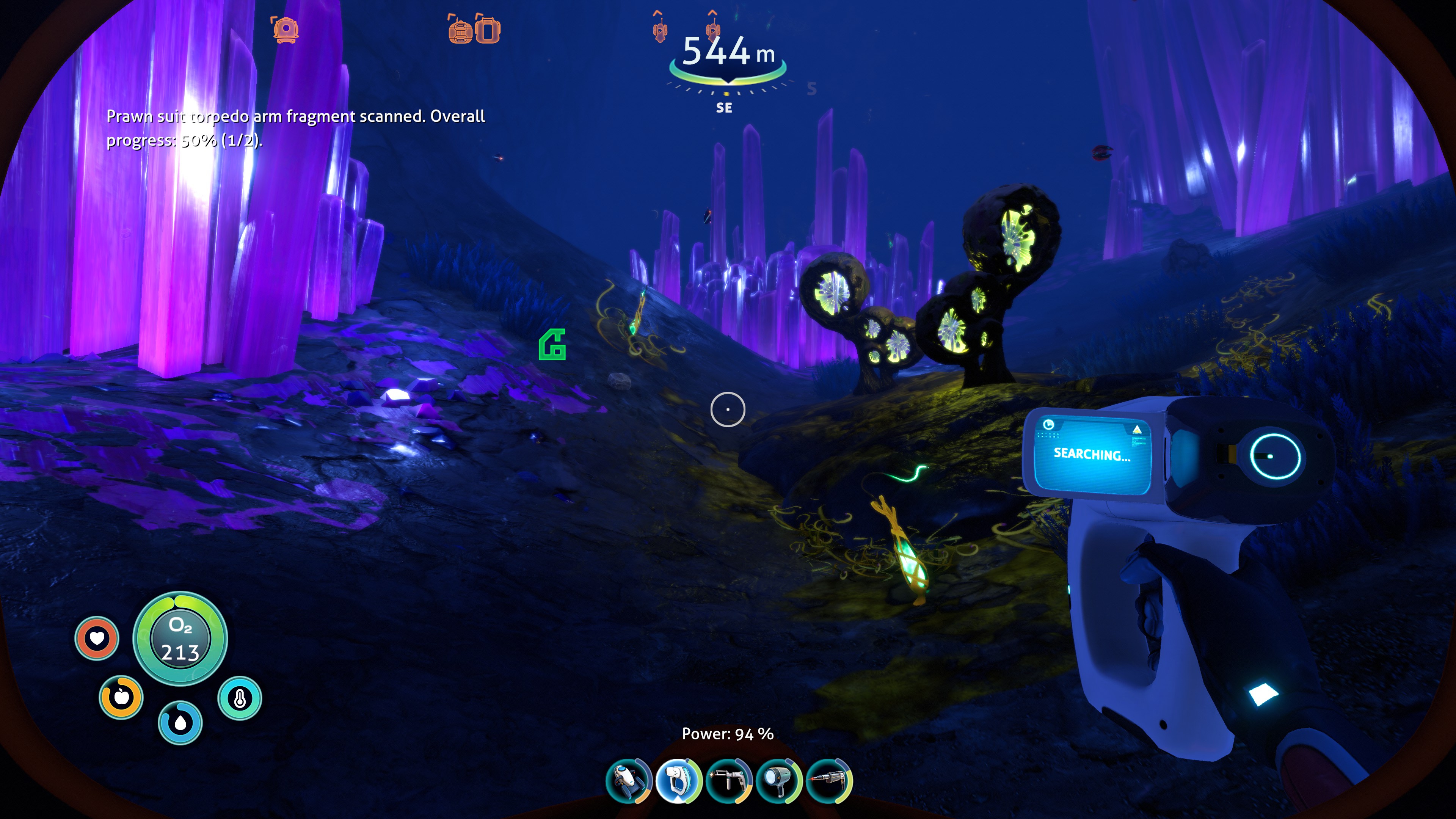
The poster-child for Below Zero's added interactivity is the Seatruck, the sequel's primary new vehicle. By default, the Seatruck is a small and nippy submersible reminiscent of Subnautica's Seamoth. But it's capable of towing different modules that serve various functions, such as fabrication, storage, and an aquarium that sucks up smaller fish as you travel. With all modules attached, it functions more like Subnautica's Cyclops, a mobile base that you can tow around and detach from at any point.
The Seatruck is a brilliant bit of design. Pushing and pulling different modules into place, yanking the big lever that detaches the main submersible from the trailer, is hugely satisfying, demonstrating Below Zero's love of letting you get hands-on with its world. Yet despite its clever concept, the Seatruck is simply not as fun as the nippy little Seamoth or the awesome, hulking Cyclops. It's a bit too limited on its own, a bit too slow with modules attached. Subnautica's virtual vehicles are some of the best ever designed, and the Seatruck is sadly caught between a sequel's need for new features and solving a problem that didn't need to be fixed.
Even the "bad" bits of Below Zero are good by most other standards.
This latter point affects Below Zero more broadly. Gathering resources is fiddlier and more frustrating than in Subnautica, despite the addition of a tool specifically designed to help you find resources. It's hard to pin down the exact problem, but having two resource outcrops that look very similar and blend into large portions of the environment doesn't help. The more complex topography is also a factor, making it easier to become disoriented. Searching Sea Monkey nests for upgrade parts is particularly tiresome, as it's hard to tell whether you've already searched a nest from a distance.
The problem of over-fixing is most evident in the storytelling. Below Zero's story is far more present than Subnautica's. Characters are much chattier and there are even NPCs who appear on screen. But the end result is a less engaging story. The issue is partly a dispelling of mystery, as you're having stuff explained to you rather than discovering it yourself. But it's also that the characters are simply a bit dull. Robin is your typical snarky American rolled off a Hollywood conveyor belt, while there's another character that, while not strictly an AI, might as well be one for how hackneyed the portrayal is, to the point where I fully expected them to say "Is this what you humans call…love?"
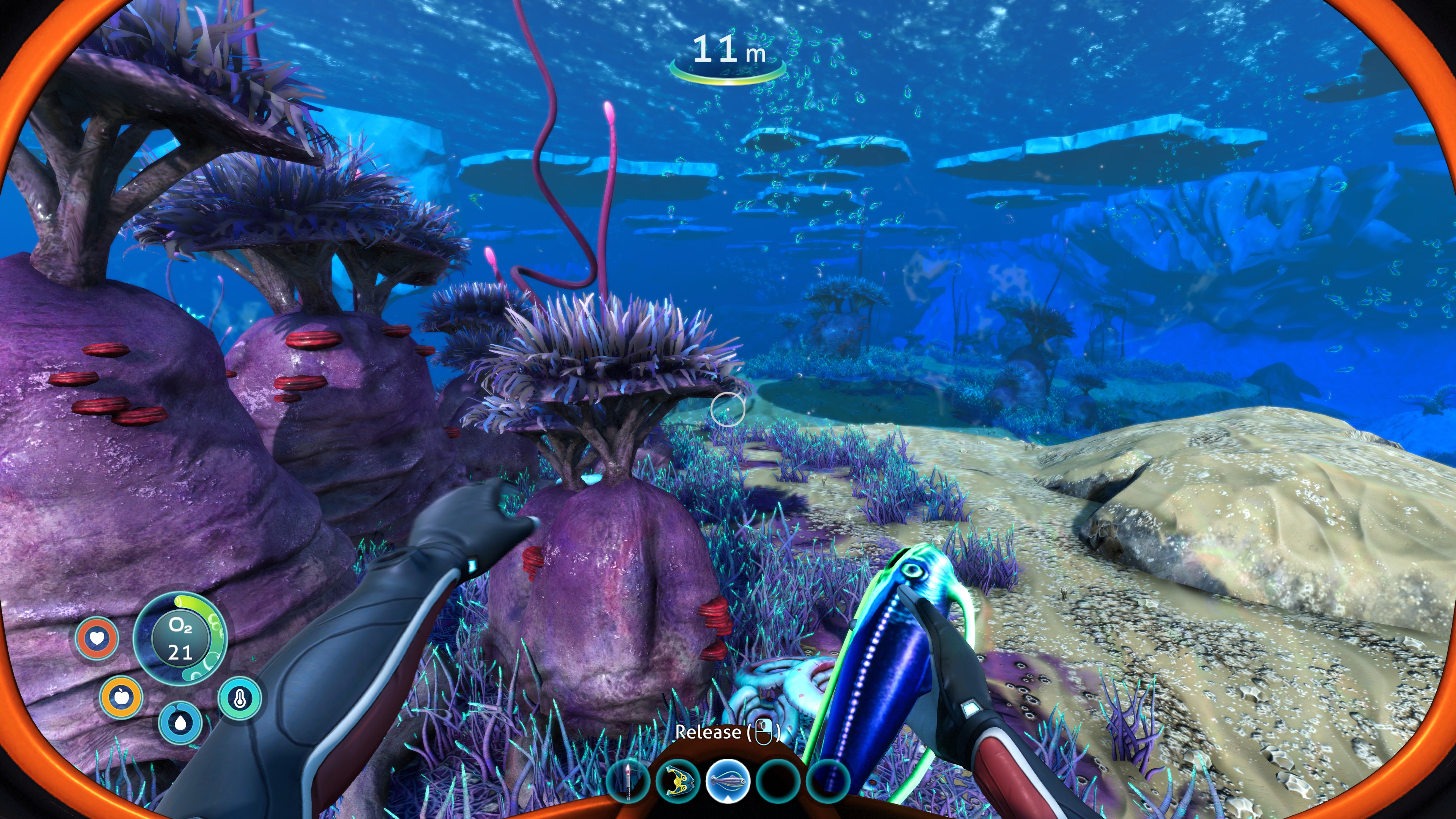
Again though, it's vital to stress that even the "bad" bits of Below Zero are good by most other standards. Below Zero may not improve on Subnautica, but it's still an excellent game. There are incredible features I haven't even mentioned, like the sound design. If you really want to know what Below Zero is about, stop anywhere in the game's ocean and listen. Listen to the roar of the current, the pitter-patter of hail splashing into the surface above, the echolocating calls of glow-whales, the piercing shrieks of creatures that you really don't want to find you. It's some of the best sound design I've ever encountered, and that I only got to it while summing up should give you some inkling of how good Below Zero ultimately is.
Below Zero is a mostly brilliant sequel to the best survival game of all time.
Rick has been fascinated by PC gaming since he was seven years old, when he used to sneak into his dad's home office for covert sessions of Doom. He grew up on a diet of similarly unsuitable games, with favourites including Quake, Thief, Half-Life and Deus Ex. Between 2013 and 2022, Rick was games editor of Custom PC magazine and associated website bit-tech.net. But he's always kept one foot in freelance games journalism, writing for publications like Edge, Eurogamer, the Guardian and, naturally, PC Gamer. While he'll play anything that can be controlled with a keyboard and mouse, he has a particular passion for first-person shooters and immersive sims.
